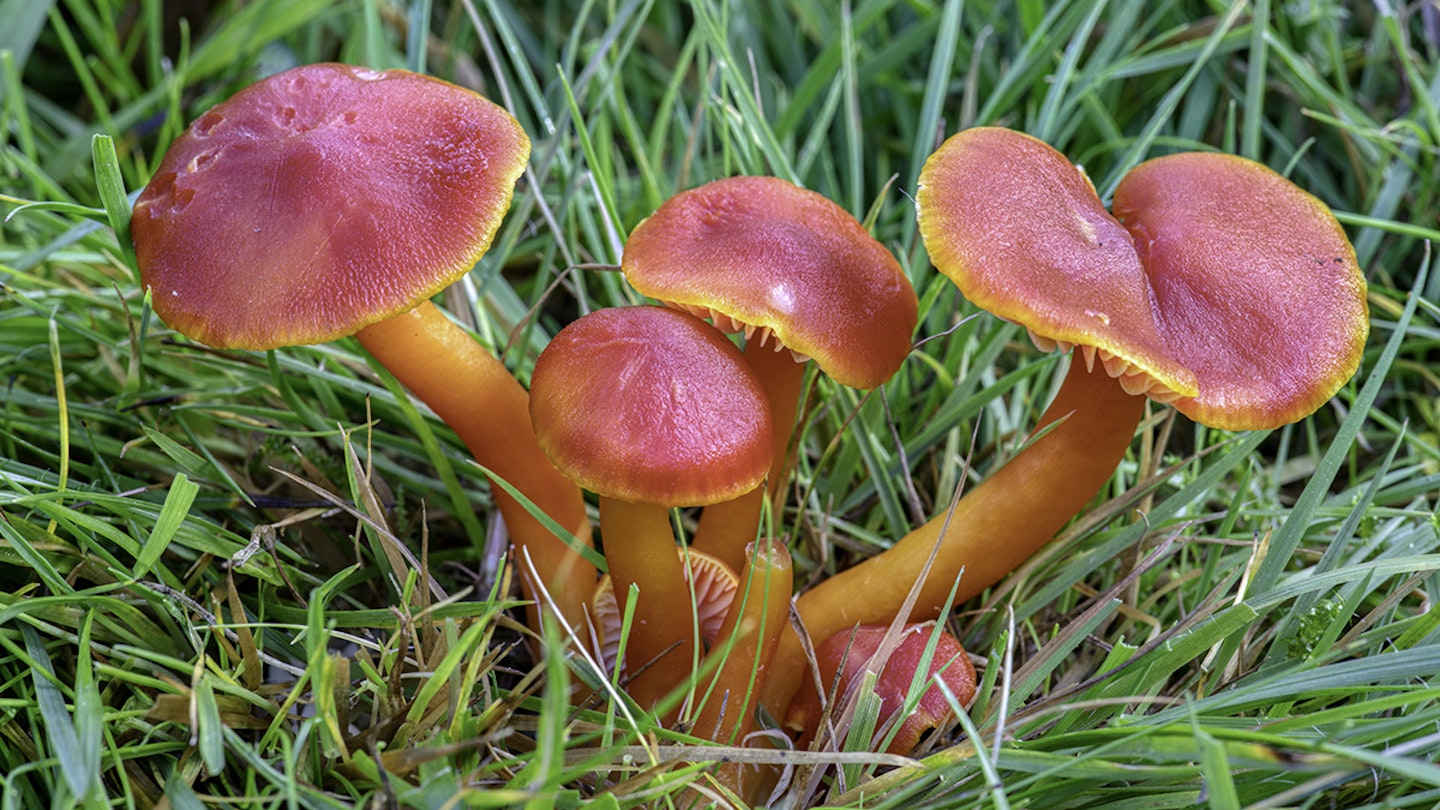Have you ever spotted these colourful fungi in your garden, or perhaps when out for a walk?
People are being asked to look out for waxcap fungi so that experts can identify forgotten patches of old grassland which can then be ear-marked for protection.
The UK has some of the most important waxcap grassland in the world.
More than half of waxcap fungi are in Wales and Scotland - but waxcaps and other grassland fungi are becoming rarer because they don't do well on intensively-farmed land.
What am I looking for?
Waxcaps are often bright red, orange, or pink, and can be seen in meadows, lawns, and graveyards during the autumn, providing a good indicator of undisturbed grassland habitat.
They can be found in gardens and grassy spaces in towns and cities, as well as out in the countryside.
Knowing where waxcaps are thriving helps to pinpoint where fragments of old meadows and pastures survive.
This is not just important for the hundreds of wild flowers they can be home to, old meadows and pastures are also important in the fight against climate change – species-rich grassland can store up to a third more carbon than grasslands with just a few species.
But the UK has lost 97% of its traditional meadow and grassland habitat, which now covers less than 1% of the country's land area.
How do I get involved?
This waxcap survey is being run by Plantlife and will be live from the 13th September.
Plantlife's Dave Lamacraft said: "It took 6,000 years to create the ancient, species-rich grassland for which the UK is globally famous, and we must do everything we can to protect, restore and cherish what remains.
"We can't overlook this vital habitat as a key contender in the fight against climate change with its carbon-locking ability, but we need to know where the missing pieces are first.
"The fungi kingdom is lending us a helping hand this autumn by lighting up the forgotten pockets of our grasslands - quality remnants potentially unchanged and untouched for hundreds and hundreds of years and which need our protection."
Plantlife said there were hundreds of sightings reported last year, and the WaxcApp is available for reporting more sightings this year.
To take part and to download the WaxcApp, visit Plantlife's website.
Read more popular articles
Get involved with the Big Butterfly Count and make your garden butterfly friendly
